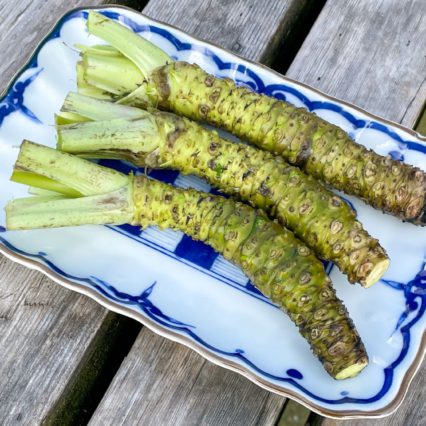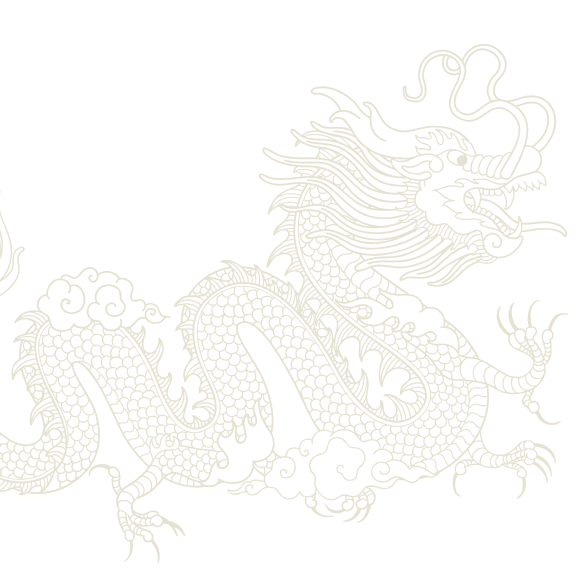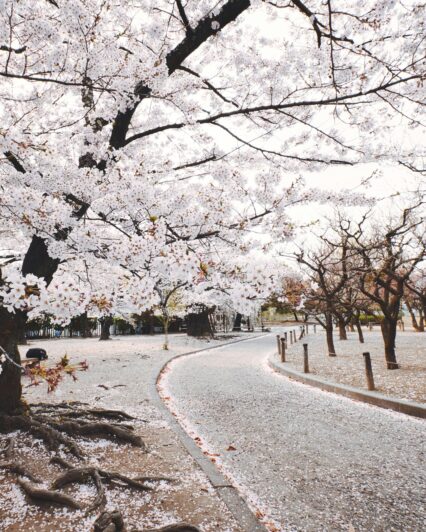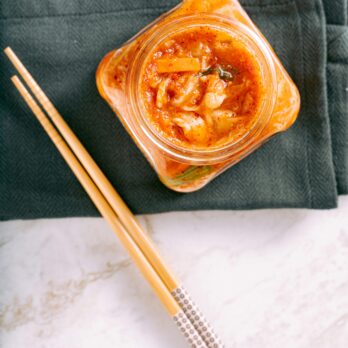The Development That’s Got Us Extra Excited About Wasabi

The Development That’s Got Us Extra Excited About Wasabi
Here’s why:
What to know about wasabi (and what Americans often get wrong)
First thing’s first: The vast majority of so-called “wasabi” in the US isn’t wasabi. In fact, you likely have never eaten real wasabi. Almost always, what’s presented as wasabi in North America is actually a mixture based on wasabi’s relative, horseradish. And for good reason: They’re closely related — in Japanese, horseradish is called “western wasabi” — and real wasabi is usually very expensive.
The reason wasabi costs so much is because it’s scarce. And the reason it’s scarce is because it only grows in a really specific climate.
Even within Japan, wasabi’s a finicky plant that won’t grow in most places. It requires an environment with lots of moisture, it doesn’t like hot temperatures, and it shuns sunlight. In Japan, that means it grows in the cooler mountainous regions, especially by streams in the valleys.
Besides being hard to grow and subsequently rather expensive, what are wasabi’s other qualities?
Having been used in Japan for well over 1,000 years, wasabi’s a lot more complex — and a lot less of a pure punch to the throat — than it’s western imitation. While the plant has leaves that you can use as greens, wasabi’s primary culinary value is in the stem, which looks kind of like a light green, densely-noduled horseradish root.
The main use for this stem is grating it into a paste. Unlike imitation wasabi, true wasabi paste won’t retain its kick for very long; it’ll become much more mellow and bland about 15 minutes after grating. (That’s where the tradition comes from of sushi chefs putting wasabi in between the fish and the rice; doing so protects it from oxygen, so the wasabi’s flavor doesn’t decay too fast.) This is obviously a key distinction from its horseradish-based cousin, which will remain incredibly pungent for a long time after being mixed into a paste.
Having to grate wasabi each time you need some might sound inconvenient, but the qualities that require you to do so have significant implications for the taste difference between wasabi and imitation wasabi. Just like how wasabi’s taste becomes less harsh quite quickly after being grated, it forgoes that overpowering burn in favor of a more rolling, calmer spice married with more prominent flavors beyond that. While imitation wasabi can mask the taste of the ingredients it’s used with, real wasabi’s fresher taste and milder spice helps enhance other flavors.
So, while imitation wasabi’s useful for its longevity and accessibility, we highly recommend experiencing real wasabi if you get the chance! And quite conveniently, farmers much closer to home than Japan have recently discovered that there’s nooks in part of the Pacific Northwest that are perfect for growing the real thing.
Enter our friends, Oregon Coast Wasabi.
Why the Oregon coast? And how did Oregon Coast Wasabi come to be?
Founded by Jennifer Bloeser in 2010 with the help of her husband, Markus, Oregon Coast Wasabi is the end result of her being in the right place at the right time, completely by accident. They wouldn’t even exist if not for the fact that, almost 20 years ago, Jennifer was given wasabi starts by a complete stranger. Now, she and Markus are bringing real, fresh wasabi to the world outside of Japan.
The reason this is possible goes back to the climate. Remember how wasabi’s scarce because it’s so hard to grow? Well it turns out that one of the few places that imitates that specific Japanese mountain valley climate — humid, cool, low sunlight — is right by the Oregon coast. In their words, a “climate [that’s] optimal for wasabi cultivation.”
Because of the location’s similarities to the cool, mountainous (but not too high-alpine) regions of Japan, Oregon Coast Wasabi is able to grow wasabi that’s not just local and thus less expensive, but also fresher and higher quality than many imported Asian wasabi.
Beyond their natural environmental benefit of growing wasabi close to home, they also work to use sustainable farming methods like rain recapture, and donate 1% of their profits to estuary preservation.
For us at Uwajimaya, all of this together is something to get excited about. And we did get excited about it; so as of the time you’re reading this, we now carry fresh Oregon Coast Wasabi stems in the produce sections of all our stores.
Thanks to Oregon Coast Wasabi, we’re able to bring real wasabi to more people — and the result is wasabi that’s fresher, less expensive, and has a lower carbon footprint. We think that’s something to be happy about, and we hope you do, too.




